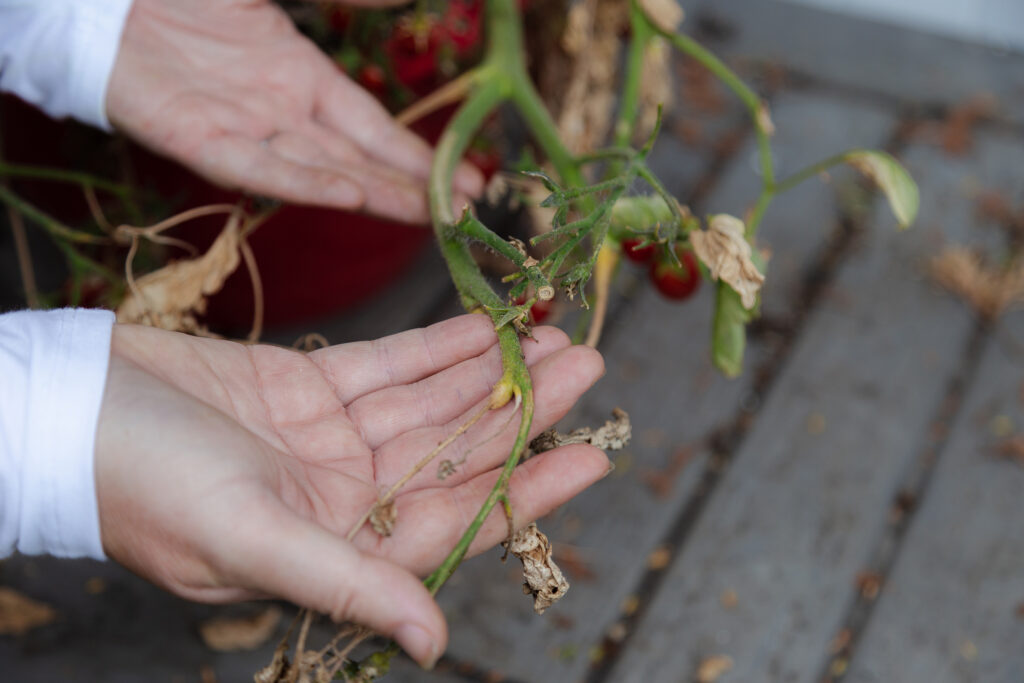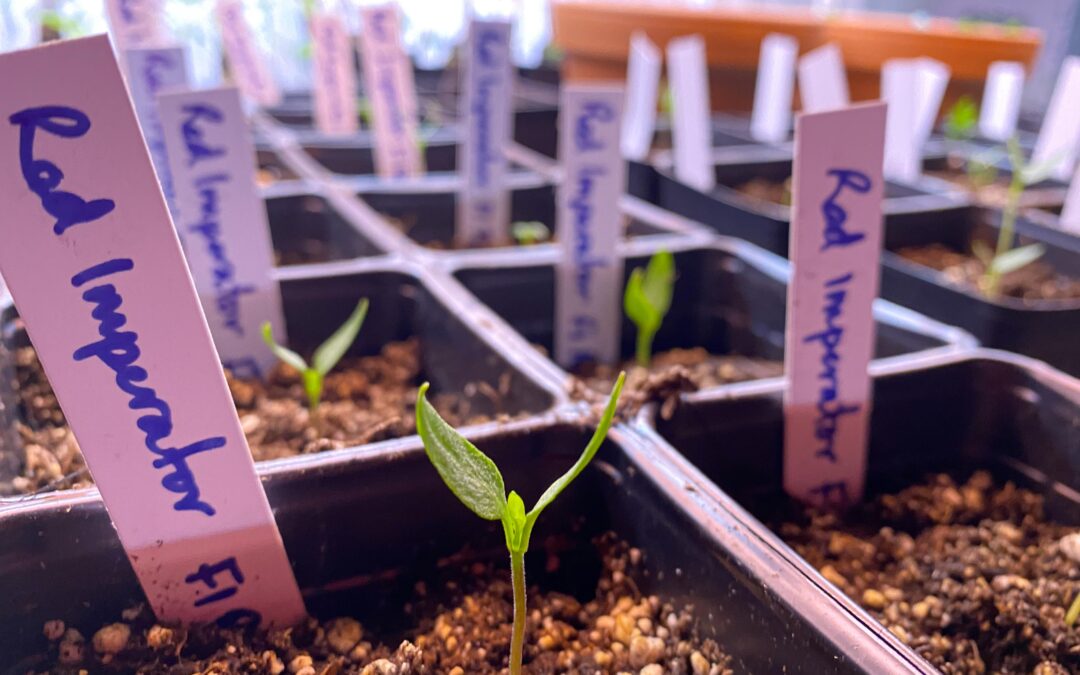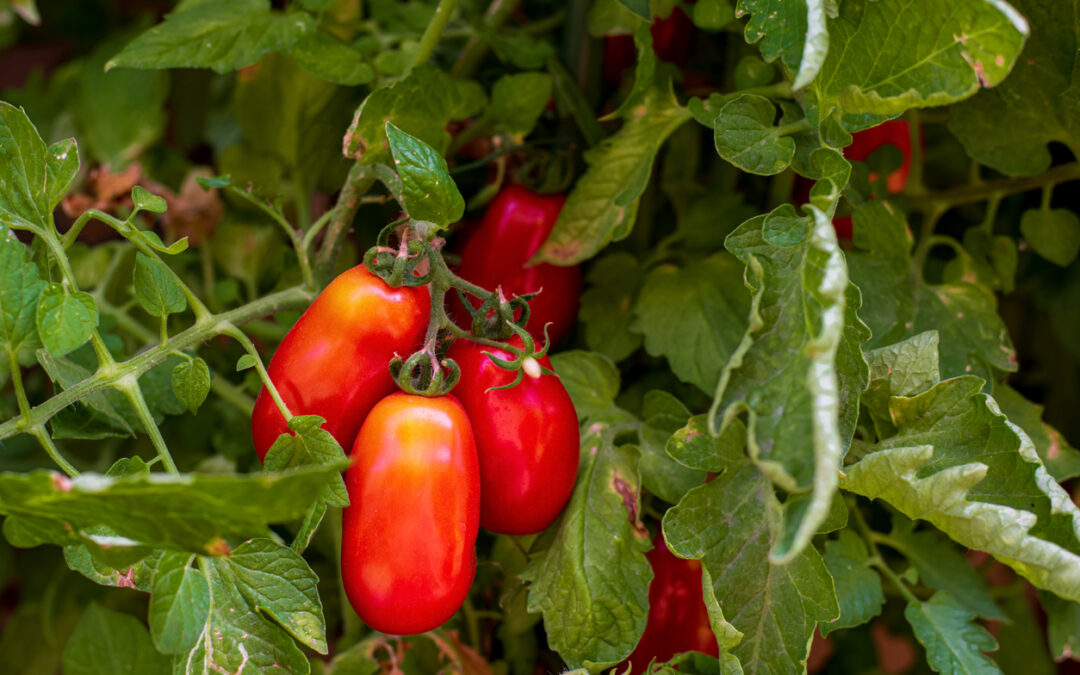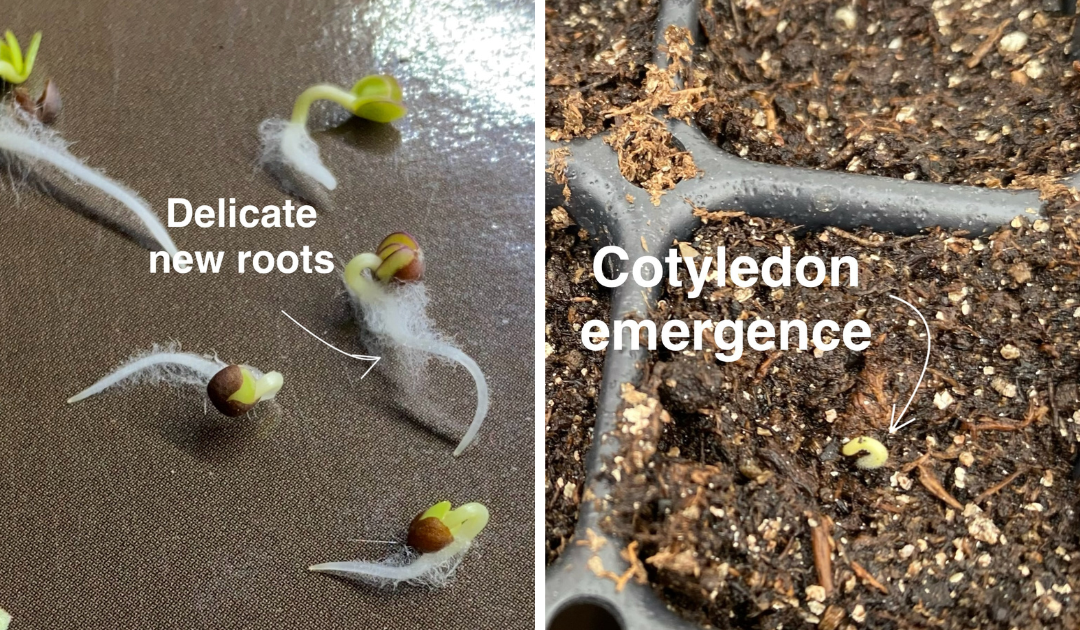
Humidity can lead to fungal diseases like gray mould botrytis or powdery mildew on your greenhouse plants.
The ideal relative humidity (RH) for your greenhouse is 50-70%, but in a hobby greenhouse–without all the machinery and environmental controls of a commercial operation–we are really at the whim of nature.
Low humidity will cause more white powdery mildew to appear. High humidity and condensation can cause spots on leaves infected with powdery mildew and can lead to straight-up icky mould and rotting plant material in advanced botrytis.
Clammy, high humidity (RH of over 70%) and cool temperatures (16-18C) are the perfect starting ground for gray mould botrytis, which loves to set up shop within 8 hours on any standing water on plant leaves.
The good news is that humidity is very manageable. Follow these simple steps in your gardening practice:
- Always water the soil, not the plant leaves, to avoid water accumulating on the leaves
- Space your plants out so they aren’t crowded and air can move between the plants
- Petals and leaves falling from plants and baskets should be composted right away to prevent decay in your space
- Don’t water your plants after 5 pm to ensure any water that does hit leaves can dry out before the stillness of the night
- Keep your greenhouse door open and vents open so air can move up and out of the greenhouse
- When it’s really hot out, water twice a day (before 10 am and after 4 pm)
- Dew spells doom for greenhouse plants! If you see dew on your plants in the mornings, move them outside if you can, or get a fan on them
So, before reaching for a fungicide, check your humidity and make some changes to how you garden.



